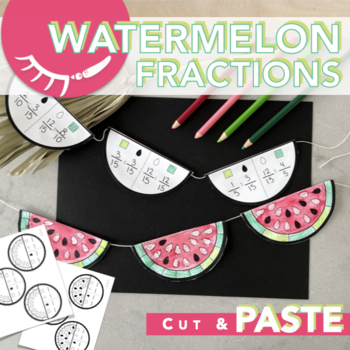Compare Fractions Worksheet │Paper Garland Craft
- Zip
Description
This watermelon fraction garland is a great compare fraction worksheet. Use this fraction art and craft to explore equivalent fractions and reduce fractions.
Each printable math fraction worksheet has 3 different watermelon slices. This equivalent fractions worksheet pdf is available in a variety of segments which are indicated on the bottom corner of the page.
Included:
Printable PDF
Visual Instructions
Video Instructions
Page combinations included:
/2 /4 /8
/3 /6 /9
/5 /10 /15
/8 /16 /24
There are also some simpler math fraction worksheets included to help differentiate lessons:
/1 /2 /3
/4 /5 /6
Connect with Me:
I would also LOVE to see how you use them in your classroom! Feel free to tag me or send me a message if you have any questions.
New products are posted at a discount for the first 48 hours! Follow me to know about sales and new product releases.
instagram: @draw.calm
facebook: @drawcalmdesign





